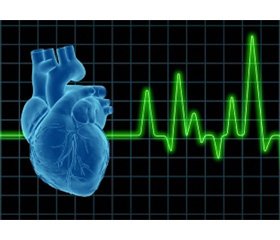Журнал «Медицина неотложных состояний» 6 (61) 2014
Вернуться к номеру
The role of b-blockers in the treatment of patients with atrial fibrillation
Авторы: Goldovsky B.M., Sid’ E.V. - State Institute «Zaporizhzhia Medical Academy of Postgraduate Education of Ministry of Health of Ukraine»
Рубрики: Медицина неотложных состояний
Разделы: Клинические исследования
Версия для печати
arrhythmia, atrial fibrillation, β-blockers.
Summary. Atrial fibrillation (AF) is one of the most common arrhythmias in clinical practice leading to disability. Diagnosis and treatment of atrial fibrillation remains a serious problem and that urges doctors and researchers to look for new solutions in the tactics of treatment this disease.
Antiarrhythmic drugs may be the cause of arrhythmia, and even its fatal forms. When choosing the rational therapeutic tactics, it’s necessary to correlate the probability of expected benefits and potential risks of antiarrhythmic therapy. Modern treatment of patients is justified only from the standpoint of evidence-based medicine, so you must assign only those drugs which have not only proved their efficiency, but are also of the high safety for these patients.
As the recommendations of the European society of cardiology for the maintenance of sinus rhythm after cardioversion in patients with paroxysmal form of atrial fibrillation are prescribed such antiarrhythmic agents as disopyramide, flecainide, propafenone, amiodarone and sotalol.
Effective antiarrhythmic drug propafenone holds sinus rhythm in average 56-83% of patients, but the use of this drug, as other drugs 1C class is not recommended in patients with CHD, hypertrophy, or dysfunction of the left ventricle.
Amiodarone available today as antiarrhythmic drugs is undoubtedly one of the most effective. The share of amiodarone accounts for about 25% of the total number of all prescribed antiarrhythmic drugs. According to the literature the effectiveness of the most frequently used anti-arrhythmic drug amiodarone in the prevention of seizures AF is 5-83%, but we should not forget that amiodarone in the long reception is not always well tolerated, because it has many side effects.
B-blockers may have rather high antiarrhythmic efficiency in certain groups of patients. The efficiency of b-blockers for the prevention of seizures AF according to different authors varies from 40% to 55%, the best result was obtained in patients with adrenergic paroxysms AF.
Beta-adrenoblockers belong to II class of antiarrhythmic drugs, effectively reducing heart rate, they have a number of direct and indirect mechanisms of action that may reduce the risk of AF recurrence.
Direct suppression of cardiotoxic effects of catecholamines at the expense of their exit from the neurons through blockade of presinaptic b-adrenoreceptors plays an important role among the influence of b-blockers. In addition, b-blockers improve baroreflectors of the heart and major vessels.
According to «Atrial fibrillation National clinical guideline for management in primary and secondary care» published in England, practical doctors quite often prescribed namely b-blockers.
At present there is a shortage of modern large international studies of the effectiveness of b-blockers for AF. Small-scale studies show equal or comparative efficiency of b-blockers with others recommended for the prevention of this arrhythmia with antiarrhythmic drugs.
In the study of SAFE-T the efficacy of amiodarone, sotalol, and placebo in renewal and maintaining of sinus rhythm in patients with AF was compared. Sotalol, and amiodarone were almost equally were effective for sinus rhythm in patients with AF and significantly superior to placebo (sotalol 24.2 %, amiodarone 27.1 % of placebo 0.8 %). Amiodarone was the best preparation for the conservation of sinus rhythm, but in patients with CHD amiodarone and sotalol were equally effective. Patients with sinus rhythm had a higher quality of life and exercise tolerance.
The results of a number of studies that indicate antiatherosclerotic activity of metoprolol are significant. Thus, in the study of ELVA was shown that the action of metoprolol complements antiatherosclerotic effect of statins. In patients with hypercholesterolemia statin therapy in combination with metoprolol 100 mg/day or placebo for 1 year in the group of metoprolol there was significant reduction of intima media carotid artery thickening, achieved distinction was maintained for 3 years after the start of the treatment.
Therefore the high security of b-blockers may be considered as drugs of first choice in AF.

